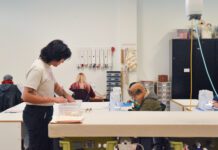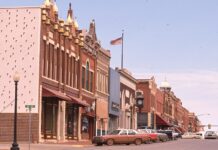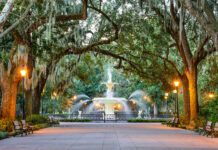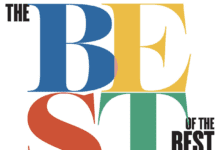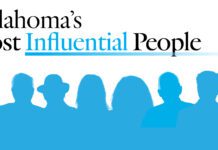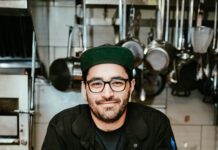Born out of a single hovering cloud, the Center of the Universe is about to unleash a shockwave of activities musical and otherwise. Its epicenter: a concrete circle and acoustic anomaly. We’re not talking about the echo.
A person standing on the circle will hear his or her own voice amplified and resonate, yet anyone standing outside of the circle will not hear the same effect. On July 19-20, everyone will hear the phenomenon that is the Center of the Universe Festival, a free downtown showcase of national rock acts as well as popular names from closer to home.
The two-day event stamped by a down-home-downtown eccentricity inspired by the brick-and-concrete landmark and Artificial Cloud (the 72-feet-tall metal art structure with a cloud balanced on a point and planes outlined in its base) brings native Tulsan Ryan Tedder and the rest of OneRepublic back to town to co-headline the event with bands OK Go and Neon Trees. Rising acts Churchill, Mayer Hawthorne and funky addition Yo Mama’s Big Fat Booty Band are just part of a lineup of rising national acts. Also look for the Eric Himan Band, Dante & the Hawks, Fiawna Forte, Colourmusic, Sick/Sea and Redwood Rising among many others. The list continues to grow.
Like any good street party, the Center of the Universe Festival jives with the Brady Arts District’s vibe with its own array of colorful vendors set up. Everything happens in a stretch from the festival’s namesake on the Boston Avenue pedestrian bridge – between First Street and over the railroad tracks to Archer Streets on the north side of the railroad tracks – north to Cain’s Ballroom at 423 N. Main St., where the national bands will play on an outdoor stage. You’ll find more on a short walk to the Guthrie Green, 111 E. Brady St., where more music is booked for the state-of-the-art stage and public gardens.
VIP tickets ($245) will allow you to experience more at the festival, but for those without them, expect everything the universe has to offer for free. For more, including schedules and maps, visit www.centeroftheuniversefestival.com.



